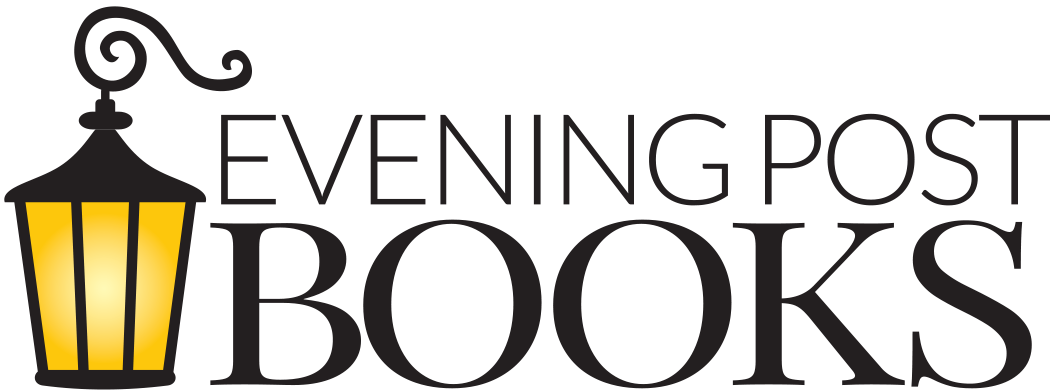One of the most common questions we receive is “What is your publishing process?” And it’s a great question! A lot of work goes into publishing a book, so it’s natural for authors to be curious about the course of action. That’s why we decided to put together a step-by-step guide to publishing with Evening Post Books (EPB).
Submission
Before we can evaluate a manuscript, somebody needs to send us one. That’s why we have our Submissions Page. If you follow the prompts on that page, we will receive and read your manuscript. From there, we discuss internally if we’d like to pursue publication of the work. We review these submissions once per month.
First Contact
If we think your manuscript has potential, we will reach out via email. The initial email helps us to gauge your interest in publication and allows us to set up a date to meet. This first meeting is very important, because it’s where everyone explains what they hope to gain from working together. This is, often, the moment we decide whether or not we will push forward with publishing your book. It also allows us to discuss a few important topics:
- What might your contract look like? (More on this in the next section)
- When would we edit and publish the book?
- Who will be the editor?
- What other services will we provide through the editing and publishing process?
It also gives you a chance to ask any nagging questions or to voice your concerns.
Our Different Contracts
We have two major types of contracts at Evening Post Books. Every contract we provide falls under some variation of these two options.
The first is the traditional contract. A traditional contract is what you’d expect from a book publisher. While the details vary from book to book, this contract often includes these elements:
- EPB finances the publishing process, including printing and distribution of the books
- Full editing and designing services from our team
- Authors will receive a percentage of profits on every book sold
- A highly collaborative process where every major decision is discussed together
- Book marketing services
The second type of contract are what we call “contract jobs.” In a contract job:
- The publishing and printing process is usually financed by the client or a sponsor
- We still provide full editing and designing services, but can also help you get in contact with exactly the graphic designer you’d like to work with
- The client takes full ownership of the books once they are printed, and can sell them as they like, receiving 100% of the profits
- We can help to sell the books, charging just a management fee
- We will make sure you get a book with all the specifications you desire
The Editing Process
Our editing process is pretty straightforward. Initially, your accepted manuscript will be assigned to one of our editors. You will either be working with John Burbage, one of the Cofounders of EPB, Elizabeth Hollerith, the executive editor of EPB, or, if you’re really lucky, you’ll be working with me, Alex.
First Review: The Holistic Edit
If your initial manuscript is already complete, your editor will go through the whole book and first provide some holistic feedback. This is where we address the biggest changes— for example, if there’s a major plot hole or a problem with a group of characters. You and your editor will work together closely in this stage to make your story the best it can be. You should come out of this with a completed second draft of your story.
Second Review and Onward: Grammar, Grammar, Proofread
After you’ve completed your second draft, your editor will again read it all to make sure the new story works. From there begins the process of line editing and proofreading. Frankly, this process will last from this moment, all the way up until we hit print. In the case of 100,000-word books that have possibly undergone innumerable changes and edits behind the scenes, your editors need to be sharp up until the very end. We need to make sure your book has clean grammar, accurate facts (especially in the case of nonfiction), no embarrassing mistakes. I won’t name names, but I once saw a writer substitute their own mother’s name over the name of their primary antagonist for an entire chapter without realizing it. That wouldn’t have gone over well at Thanksgiving.
Once both author and editor are happy with the manuscript, we will send it to our designer for layout.
Marketing
Somewhere around this time is when marketing will begin. We want people to be excited about the book before it launches. While our marketing strategies change over time and differ from book to book, we can reveal a few things we do for you.
- We place the book on our website for preorders
- We talk about new upcoming releases in our newsletter (which has several thousand subscribers)
- We post on our social media
- We may even advertise on socials and in the Post and Courier
- We help set up a launch day event (or two or three)
This marketing process is also the moment where you, the author, can help yourself the most. Author events at bookstores and universities and libraries sell books. The more events you are willing to do, the more books you’ll sell. The more people hear about you and your book, the more other bookstores will come around and ask about you. Authors willing to work to sell books will almost always see more success than authors who don’t.
Layout and Printing
After one of our professional designers finishes laying out your book, you guessed it, your editor will read through it all again. The proofreading process is tiresome, but it’s so worth it to catch those tiny but embarrassing mistakes. When that final proofread is finished, we’re ready to print. There are two different types of printing that we utilize.
Offset printing is when we choose a major printer to print all of the books. Offset printing is the more expensive option, but it also gives us a lot of control over the quality of the final product. In offset printing, we have full authority over things like paper quality, color, cover type, paper binding technique, and so many more things. Offset printing will usually take up to a month of time, sometimes more, from the moment you choose to print to the moment you get your books.
On-demand printing is done almost entirely through Ingram Lightning Source. It’s much faster and less expensive than offset printing, but you have much less control over the physical specs of the book. Still, it’s a great option. The speed of on-demand printing allows us to print smaller orders of the book at a time, so we never worry about running out of stock. Additionally, the lower price point makes it easier to sell the books at a lower price. Furthermore, bookstores and other sales outlets can order print-on-demand books directly from the printer.
Sales
Once the book is published, all that’s left to do is sell! Again, the marketing phase continues through this point, and authors can have a huge impact on the sales numbers for their book. We, of course, sell the books through our website and directly to booksellers and major distributors.
So that’s what you get when you work with Evening Post Books. What we want to do, more than anything, is publish good books. When we help authors to create the book of their dreams, that’s what makes our jobs meaningful. So, if you’re interested in publishing with Evening Post Books, then you know what to do. Not everyone who submits will be accepted, but you’ll never be accepted if you don’t try. Head to our Submissions Page to begin your publishing journey today.



